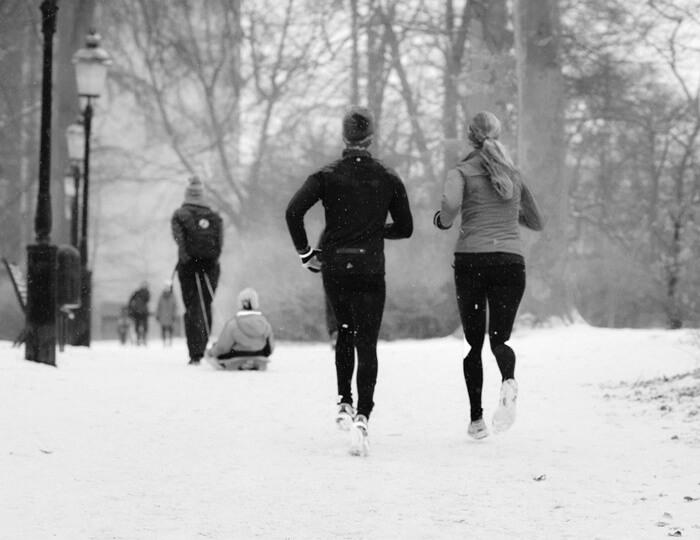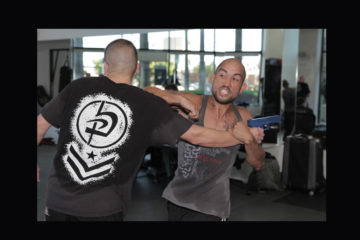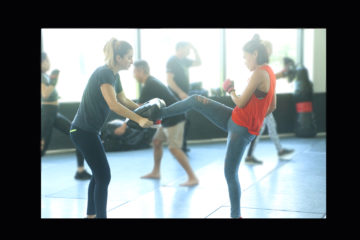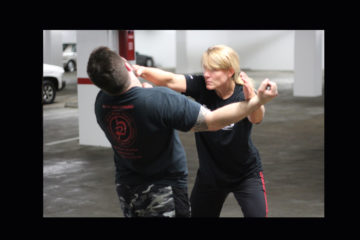Adults live busier lives than ever, and sometimes you just can’t make it in for your Krav Maga training exercises and instruction. It happens. That doesn’t mean you have to let your skills languish, however. With a little space and some dedication, you can stay sharp by training in your Krav Maga fundamentals at home.
Life Happens
There are lots of reasons why students end up missing a session or multiple sessions. Sometimes schedules change, and there’s just no way around it. Krav Maga Worldwide locations offer a full slate of classes, but there may not be one that fits where your new schedule allows. Holidays, with their myriad of events, parties, and family trips, often lead to missed sessions. There’s also the possibility that work or life could take you away from your gym for an extended period of time, but absence doesn’t mean you can’t still put in work with Krav Maga training exercises.
Solo Dedication
To work on Krav Maga on your own, all you need is enough space to move freely without risking your safety. Make sure the area is clear of low furniture or floor debris that can trip you up. Watch for low ceilings or low ceiling fans. You should have plenty of light to see clearly.
If you have a full-length mirror on a wall or some training equipment, that can help, but it isn’t strictly required. Training equipment may increase your space requirements, depending on what you have available. A set of dumbbells for weight training may require less space than a grappling dummy. The bottom line is that you can keep up with your Krav Maga training exercises with as little or as much equipment as you have, whether you’re at home, at a hotel, or in a relative’s guest room.
The Four Key Skills To Focus On
When working on your Krav Maga at home, there are four key skills that you can practice virtually anywhere which will help sharpen your training. Together, these areas cover much of the groundwork Krav Maga is based on, providing you with a solid foundation for your self-defense.
Practice your stance. - The basic Krav Maga stance provides a stable platform for attack, defense, and movement in a threatening tactical situation, making it one of the most important Krav Maga training exercises while away from the gym. Step forward a comfortable distance with your non-dominant leg. Keep your knees slightly bent, and raise up onto the balls of your feet. Your hands should be up in front of you to ward off an imaginary attacker, while your elbows are down and tight to protect your ribs, spleen, and liver. Keep your eyes up, but tuck your chin slightly to protect the soft targets of your face.
This basic stance should be your reset point for the other physical Krav Maga training exercises. It allows for stable movement, front, back, left, and right, while also priming your body for explosive strikes. From this position, you can maintain or close distance, strike with your hands and feet, defend yourself, or take off at a sprint if you need to run.
Practice your punching. - While there are many different Krav Maga hand strikes, the straight punch is probably the most important and fundamental. From your stance, make a fist and rotate your hips and shoulders to throw the punch out and recoil it back to your fighting stance.
When you work on sending punches and moving in your fighting stance, you'll be shadow boxing. Work on combos and add in elbow strikes, but remember the purpose is to hone your skills. If you feel the precision of your Krav Maga training exercises getting sloppy, slow down and work on the fundamentals before speeding back up.
Practice your front kick to the groin. - The front kick to the groin is a basic technique that’s easy to train when working on your Krav Maga at home. From your stance, lift your dominant leg up, driving your knee forward by driving your hips forward. Then let your leg unfold up and
push it through the opponent's groin.
When working on the front kick in your Krav Maga training exercises, balance is key. Start at half speed, focusing on retaining your balance through a strong, rising kick. Practice both returning to your original stance and stepping forward after the completion of the kick into a reversed stance. As you feel comfortable, this kick can be added into your shadow boxing routine.

Condition your body. - Of the Krav Maga training exercises we’re discussing, this is the area you are most likely to have equipment for. If you have a home exercise routine, keep at it. Surviving a fight will take strength, cardio, and toughness. If you don’t have equipment, you’re not out of luck.
Cardio exercises can be done almost anywhere. Swimming, biking, or jogging will get your heart rate going whether you’re in a gym or on the streets. If you can’t get outside, jogging in place will work, but mountain climbers offer less impact and engage your core. Get on the floor in a raised plank position. Bring your left knee up toward your chest before returning it to the start. Then, do the same with your right knee. Repeat as necessary to get your blood flowing and your air moving. Alternate the pace between workouts; moderate speed for extended periods of time can build stamina, while faster, shorter durations help you build up your cardio capacity.
Krav Maga strength training exercises should use lighter weights over more repetitions. This helps prepare your muscles for extended engagements. If you don’t have any weights, bodyweight exercises--like push-ups, crunches, sit-ups, and dips--will work many of your major muscle groups while training a full range of motion.
Stay Sharp While You’re Away
While these Krav Maga training exercises may not teach you new techniques, you’ll benefit from staying in practice with your Krav Maga at home before returning to your regular training classes. By reinforcing these fundamentals, you’re laying a solid foundation your Krav Maga skills can grow from. To learn more, visit a Krav Maga location today or visit us online.






